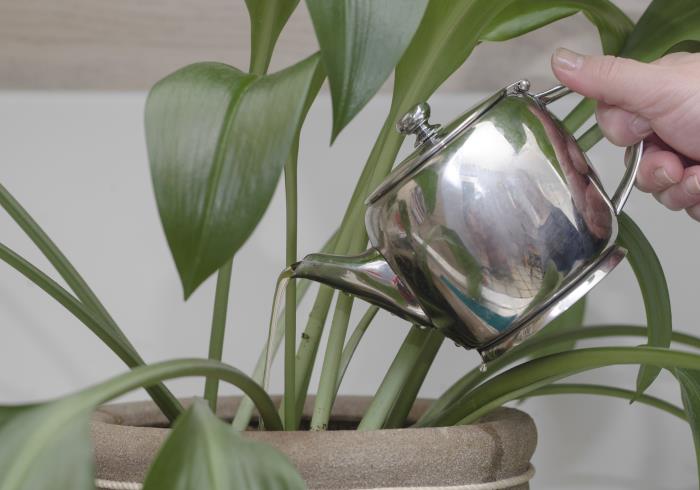Is watering plants with tea safe?
The answer really depends on the type of plant. While tea contains water plus nutrients and a variety of trace minerals that all plants can benefit from, it also contains tannic acid, which can be harmful to some plants like Boston ivy or cacti.
To learn the correct way to use tea to water plants, or add tea leaves to plant soil, read on where I explain all the details.
Can You Water Plants With Tea?
Using tea occasionally on plants that prefer acidic soil is perfectly fine, but no plant should only have tea waterings.
Tea leaves contain, on average, about 4.4-percent nitrogen along with good amounts of phosphorus and potassium. The nitrogen level is higher than in standard plant fertilizers, helping plants keep their foliage thick and green.
Trace micronutrients found in tea include:
- Vitamins C, D, and K
- Riboflavin
- Iron
- Magnesium
- Calcium
- Zinc
- Antioxidants
- Theanine
All of these nutrients improve plant health, but the tannic acid will alter soil pH, which is detrimental to many plants, so careful use is critical.
If you are a daily tea drinker, feel free to gather excess liquid into a jar and add water to dilute the tea if you want to recycle it all to your houseplants. Keeping the dosage less intense will allow you to water with tea more often.
Another way to keep the acid in tea under control is to dump the tea around outdoor plants where rain will naturally dilute the levels so your plants can thrive.
What Plants Benefit From Tea Leaves?
Acid-loving plants benefit the most from tea leaves, either added directly to the soil as an amendment or thru watering with tea. Please take caution to not over-saturate the ground with too much acid as all plants have their limits.
Before you start using tea on your plants, test the soil’s pH to have a baseline, you can compare to the needs of that plant. At-home soil pH test kits or meters are an easy way to track the conditions of your plants before, during, and after tea doses so you can maintain safe levels.
Here are the most common plants that prefer acidic soil:
- Hydrangeas
- Spider Plant
- Philodendron
- African violets
- Tomatoes
- Rubber Plant
- Poinsettia
- Easter lily
- Ferns with the exception of Maidenhair
- Some varieties of orchids and begonias
Start with small amounts of used tea leaves in potted containers, and mix well into the top couple inches of the soil.
For outdoor plants, you can remove the staple and string and bury tea bags (with decomposable paper covers) about six to eight inches from the base for fast recycling.
Test the soil for pH regularly so you can monitor levels. The more you can document, the easier it will be for you to determine when it’s safe to reapply.
How To Water Plants Using Tea
The steps to watering plants with tea are straightforward. I do highly suggest only using organic tea leaves for this process to reduce the chance of harmful chemicals building up over time in the soil which can kill the plant.
If you don’t have leftover tea in a cup or pot to use on your plants, start fresh.
- Brew a full pot of tea using one to three tea bags (depending on the number of plants you need to water). Make the tea as if you were going to drink it. It does not need to be overly dark and saturated.
- Cover the pot and let the tea cool to room temperature. Never pour very hot or cold tea onto plants, as it can damage the roots or shock the plant.
- Water your plants with enough liquid necessary to moisten the soil without making it soggy.
In Summary
Recycling leftover tea or tea bags is an environmentally-friendly way to reduce kitchen waste. Watering plants with tea delivers a dose of extra nutrients, so as long as you’re adding tea to those who appreciate a touch of acidity, it can do no harm.
Follow the tips above for using tea and tea leaves on your plants, and take advantage of this free boost of unique nutrition!











